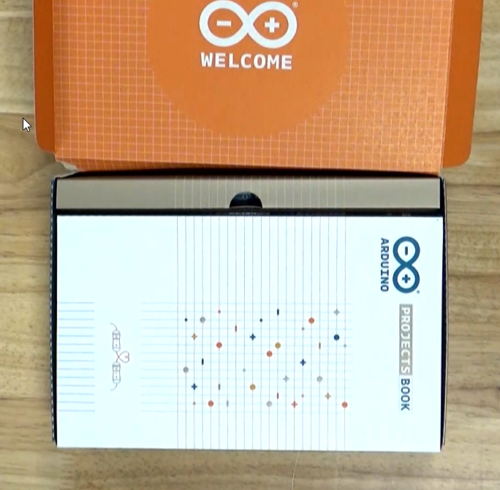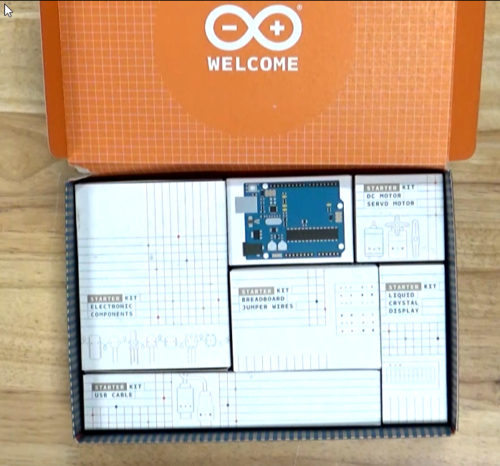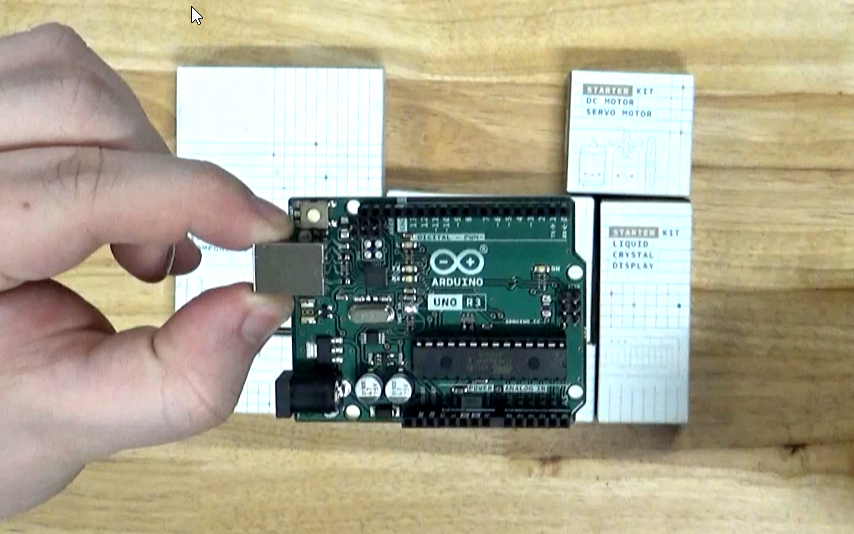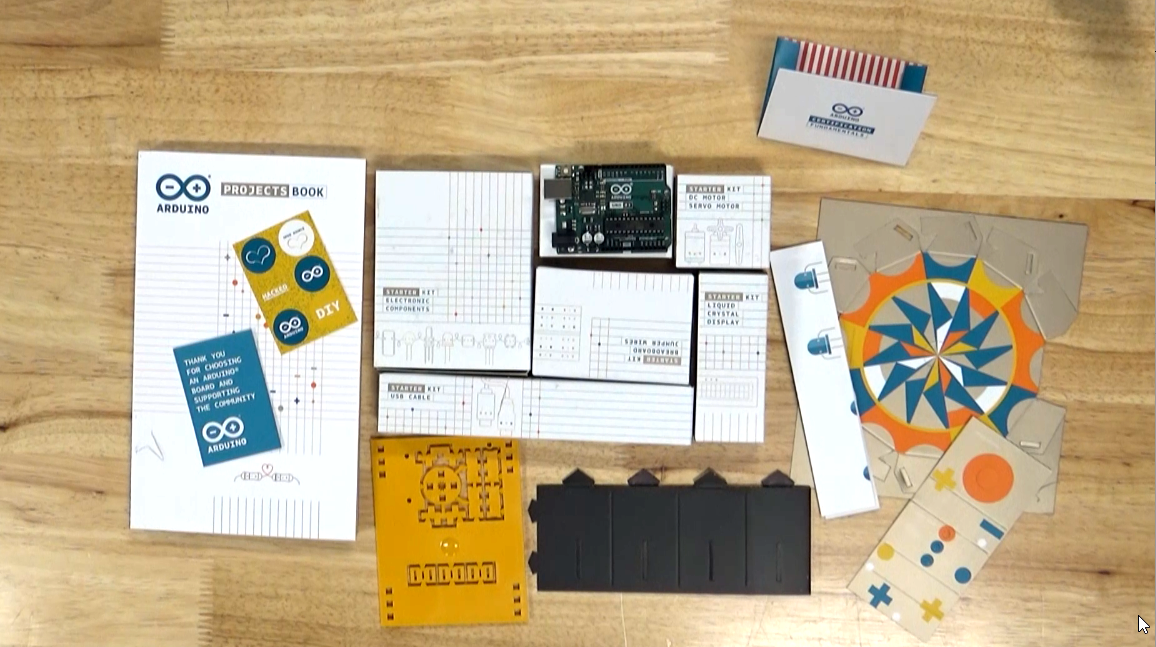In today’s article we’re going to unbox and take a first look at the official Arduino Starter Kit.
Prefer to watch the video? If you do, click here.
If you want an in-depth course on getting into Arduino, check out our new Arduino Basics course: https://theautomationschool.com/courses/100-arb/
While most of our readers are quite comfortable with PLCs, VFDs, and HMIs, I’d wager the majority haven’t had the chance to play around with what I’ll call Maker-Microprocessors. It’s usually not because of a lack of interest, but more about finding the time to research the available models, and then carve out the additional time learn how to use them.
If that sounds like you, you’ve come to the right place! To address the first part of the challenge, I recently researched the most popular Arduino (and ESP) starter kits on the market and documented what I found in the first article in this series, Arduinos and You: Picking the Right Hardware.
Now for the second article in the series I’m going to unbox and share my first impressions of the official Starter Kit purchased right from the Arduino website. While you can get the Multi-language Starter Kit for around $110 here, being new to Arduino myself I chose the kit bundled with the Online Certification Test here, and that version retails for around $126 as of the writing of this article.
What’s In The Box
Opening the brown shipping box, I was happy to find that the kit arrived in near pristine condition.
NOTE: If you’re interested, check out my unboxing video which will be coming out later this week.
As you can see from these images, the kit comes in a retail style box with full color printing on all sides. On the bottom of the packages is where you’ll find system requirements (Windows XP, Mac OS 10.5 and newer, as well as Linux.) and on the back of the box there’s a comprehensive list of what the kit contains, a breakdown of the kit’s many projects, as well as the standard warnings and cautions.
When opening the kit, the first thing we are greeted by is the code for our Arduino Fundamentals Exam, which can be redeemed online. We will be reviewing that course soon, so make sure to follow our blog for updates on the Arduino project. After removing a warranty booklet and a pack of stickers we were greeted by the Arduino kit project book. The book outlines 15 projects to get you started working with the Uno R3 which comes with the kit. The quality of the print and feel of the book is nice, and I’m impressed with the quality of the kit all around.

Removing the divider under the book, we have the kit itself and beneath the electronic components, we find the pieces of kit that we will need while building our projects. All their specific uses are in the projects book. It does not look like there are any spares, so be careful when folding or cutting any of these parts.
The kit itself includes:
- The key electronic components for the projects detailed in the book, including various small electronics like a 9-volt battery connector, LED lights, small chips and resistors, and other such parts we will be using in the different projects.
- A USB cable. This short yellow cable is used to connect the Arduino to a compatible PC for programming. It is a Type A to Type B cable, with the Arduino accepting Type B side.
- A liquid crystal display. It’s a simple LCD display with 2 rows and up to 16 characters
- A small breadboard and various jumper wires. Breadboards are simple but incredibly useful tools for learning and prototyping electronic circuits. If you’ve never used one before, it allows the insertion of chips and other components, as well as the use of jumpers to interconnect them.
- A DC and Servo motor, as well as plastic bracings for attaching to project kits.
- And last but not least, the Uno R3 itself:
The box has a genuinely nice, simplistic rendering of the board. Included in the box, we have serial numbers, as well as the appropriate specs of the board. Inside, we have the chip itself. The Uno is Arduino’s flagship chip, and the R3 is likely the most produced Arduino architecture board available, with tons of online support and software for makers of all kinds, including PLC’s and PLC software for running automation systems. Plenty of inputs and outputs for what we need to get started.
And that’s everything. Honestly, my initial impressions of the kit are incredibly positive. Everything feels professionally done and some money was definitely put into producing this and making it feel like a quality product.
I look forward to going through some of these projects with you, as well as taking the online certification. Until then, thanks for spending your time with us here on The Automation Blog, and have a wonderful day!
Written by Joseph Tierney
Technology & Microcontrollers
Insights In Automation
Have a question? Join our community of pros to take part in the discussion! You'll also find all of our automation courses at TheAutomationSchool.com.
Sponsor and Advertise: Get your product or service in front of our 75K followers while also supporting independent automation journalism by sponsoring or advertising with us! Learn more in our Media Guide here, or contact us using this form.
- Arduino Starter Kit Roundup: Four 2024 Kits Compared (Article & TMS06) - March 26, 2024
- Elegoo “Most Complete” Arduino Starter Kit: The Customer’s Choice (Article & TMS05) - March 22, 2024
- Sunfounder’s Arduino Uno R4 Elite Explorer Kit: Playing With The Next Generation (Article & TMS04) - March 20, 2024

Discover more from The Automation Blog
Subscribe to get the latest posts sent to your email.










